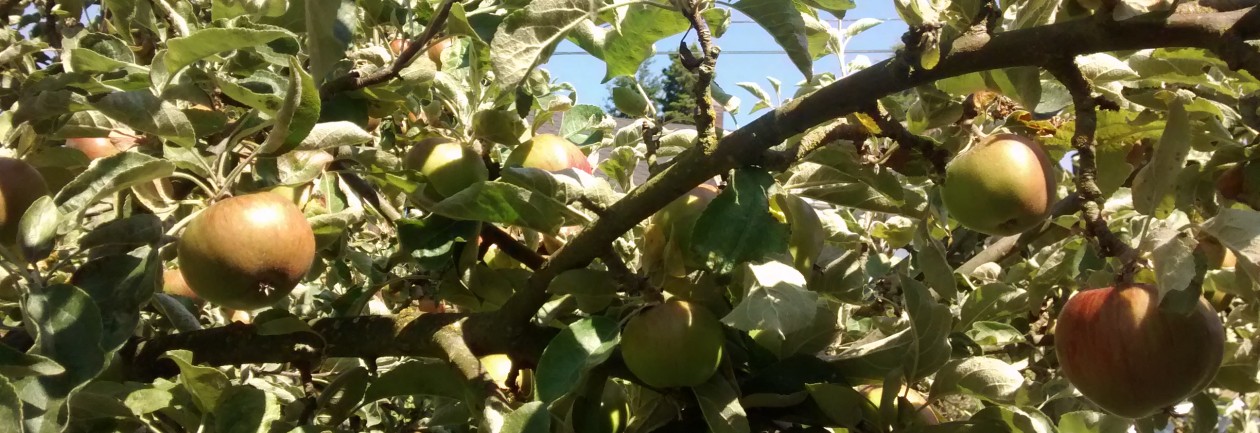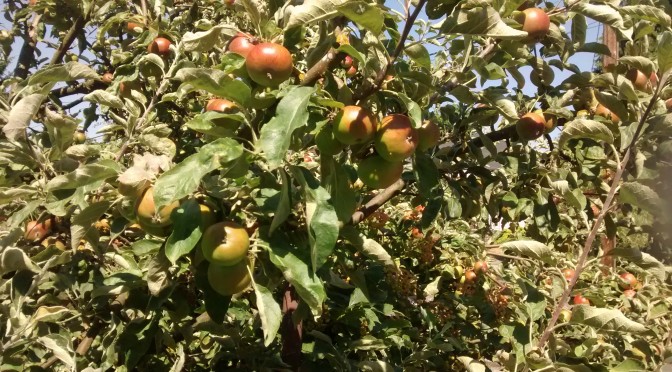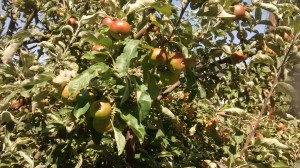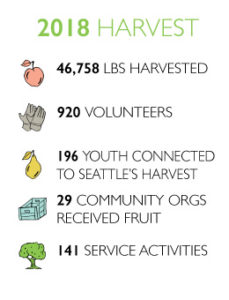It is time. We have entered the “sixth year” of the seven-year Shmita cycle. Unbelievably, we are doing this from within the perspective of a global viral pandemic that, within the past nine months, has dramatically changed the world. Things that seemed impossible to change changed overnight. For better, and also for worse. This dramatic proof that change is possible has the ability to break through our internal narrative about possibilities and cause us to dream of a better world. And with the arrival of the “sixth year,” now is the time to do that within the context of Shmita.
Shmita, described as the Sabbath of the Land, is part of a relationship between the Earth and God. The human being’s role in this relationship is precisely to step back and permit it take place – to cease our exploitation of the Earth for one year out of every seven and enable it to rest.
The sudden stop that we all just experienced is in no way the golden version of the Year of Release that I have unabashedly dreamed of and that I had hoped to play some part in bringing about with care and intention. It is humbling and terrifying to witness the devastation that the virus and the accompanying economic collapse are causing as they roll across the world. To my sensibilities, this is what it feels like to have been brought into a very abrupt, unexpected, bruising experience of Shmita; Shmita the hard way. It’s something like being in a car crash along with everyone else on Earth, each person suddenly experiencing varying degrees of injury; some are dead.
In Torah we are warned what will happen if we don’t let the Earth observe its Sabbaths, and “you will be hit-by-plague” is right in there, in the early stages in a multi-phased unfolding of horrible consequences stemming from poor choices coupled with a lack of humility. Spoiler alert: it can get worse.
I’m not a religious fundamentalist. I don’t claim to “know” the meaning of Torah, and I always compare what I read against the voice of my own conscience. When I read Torah, I hear the voices of an Author from a vast and deep past with a message for the future. The text hints at how we can live together in a just society and warns about dire consequences and choices that can lead to catastrophe. The advice can be murky after traveling through many ages in the form of ambiguous stories written in an ancient language. But as I listen to this strange and often beautiful song echoing through time, I marvel that it has served as a living thread of cultural DNA for thousands of years and still has the power to shape human destiny.
I confess that I do have an irrational belief about Torah: I believe that as human experience evolves and culture develops, the actual meaning of the text unfolds. I believe that the ancient Author’s voice continues to speak, and that some of what was encoded in the Torah’s song was intended specifically for our ears, in these times, our personal lullaby and lesson even though the words were written long ago.
Ever since I read the story of Shmita six years ago, it has called to me. From the beginning, I heard it whispering that the time had come for it to be brought to life. While it feels like we are late in receiving its message, the truth is, it would have been unlikely that we would have heeded it, or even heard it, before the need began to make itself felt; we would not have recognized it as the solution to a problem if the problem had not begun to press in upon us. Hopefully there is still time, and we can learn from it, before the worst consequences take root and doom us to live the prophesy to the end.
*
Whether we like them or not, we know the Ten Commandments from the Torah; they infuse our culture, whether we adhere to them or resist them. The commandment to keep the Sabbath is built into the fabric of our lives whether we observe it as part of a religious tradition, or just appreciate that our secular society has been shaped by it into a seven-day work week with a weekend attached.
But unlike the weekly Sabbath, which is practiced in some form almost everywhere in the world, the commandment to observe the Shmita year remains obscure, even to many who are familiar with other aspects of Torah. It has not been fully unpacked, unfolded, interpreted, or embodied, and it has certainly not found its way into the culture the way the weekly Sabbath has.
Like the Author of Torah, I would have preferred to introduce the story of Shmita with a promise, a golden vision of what could be, not with a threat, and certainly not with the sharp sting that we are experiencing today as I write this during the global pandemic of 2020 CE.
In Torah, Shmita is referenced more than once, and the reader is left to do the important work of discerning its many meanings. It is letting the Earth rest; it is freedom from debt. I personally first encountered Shmita when reading Parshat Behukotai, and my reaction to it at that time is expressed in the d’var Torah I gave that year. Shortly later, I started this blog, to help bring to life a sense of how a Shmita culture might emerge in our times.
The gist of what I learned was that if we play our cards carefully, we can live with one another in peace and receive ample and abundant blessings manifest through a fruitful and generous Earth, and even experience the divine presence in our midst in this world, like in Eden. If we don’t, the consequences will bubble ominously through the web of life until the land itself, the source and medium of divine blessing, chastises us to such a degree that it becomes “a desolation, and the cities a wasteland,” (Leviticus 26:33), and only then, when the hand of the human being has been shaken off and a complete rest from human exploitation has fallen over the Earth, will its rest be restorative, and the land become capable of providing for the human family once again. The worse the damage we do, the longer the period of rest from the human hand that will be needed to restore it.
Rest
The rest of Shmita contains dormancy and healing, pregnancy and power. We are learning this from watching the more than human world answering the Shmita that has been forced upon us. There is early evidence of a spectacular recovery of species across the world. Fish, birds, mammals, and insects, all of which had been under pressure from relentless human exploitation, are resting and re-birthing.
The disruption of global supply chains has relieved pressure on the world’s fisheries. The cessation of travel has cleaned the air and quieted the oceans. The absence of people in parks and urban areas has given space back to wildlife.
Within the human family, the rest is terrifyingly uneven. There are those who have secure homes and income who are finding new delight in simple pleasures: taking walks in quiet nature, dining in and cooking from scratch, gardening, and jigsaw puzzles. And there are those whose rent and groceries will not be paid if they do not go into work, often at jobs that involve lots of interaction with the public, and exposure to the virus. Some people have no paid sick leave and have to choose between staying home when sick and paying the rent; others are finding themselves without health insurance as the economy sheds jobs. Our current forced Shmita has exposed lethal flaws in the way our society has chosen to allocate resources, with the rich suddenly aware of the poor now that the virus can be passed across social class.
Agriculture
In Torah, the Shmita year is deeply about agriculture, requiring as it does that the fields be left fallow. The promise is that a Shmita observing world can be so productive in six years that the lack of a harvest in the seventh will be amply compensated.
In the Shmita year, fences are removed from farmed fields. The produce that grows there is freely available for all to all to take from. Everyone, regardless of their status in society, is welcome to what grows there with just a single condition: that they take only what they need. They may not hoard; they may not convert food into money by selling it. The animals, wild and domestic, are also welcomed into the fields during the Shmita year.
Our industrialized, global agricultural system is highly unsuitable for observing a Shmita year. Farmers who are finding their supply chains disrupted are euthanizing livestock (1), pouring millions of gallons of fresh milk down the drain (2), and plowing under ripe produce (3), all while starving people line up at empty food banks (4).
But seeds of adaptation are also sprouting. Some farmers in the Great Plains have begun to plant fruits and vegetables as cover crops to feed starving neighbors on fields that have typically been sown with only commodity crops. They explain that they will let people come to the fields in person and harvest the produce when it is ripe (5). The same is true of the famers who brought hundreds of thousands of pounds of potatoes to give away in Tacoma (6), and the farmer in Pennsylvania who sold out overnight after deciding to bottle his own milk and sell it from his farm, which shortened his supply chain and brought people out into farm country to find the source of the abundance they enjoy (7). There has been a huge surge in interest in planting food gardens closer to home. These are all examples of dormant seeds of Shmita germinating in the culture in a time of need.
Economics
Shmita has even another element of release: the cancellation of debt. Imagine a world in which every person emerges from the Shmita year debt free.
What is a debt besides a gamble that we will have more in the future than we have today? And what is a lender besides someone who purchases a piece of someone else’s future? Shmita would periodically erase the debt-fueled pressure to produce more, and then even more, next year than this year. After all, what is interest but the belief that next year there will be “more.” But more of what? If in the Shmita year we discover that is already more than enough, then the promise of “more” is empty. How might this dawn of awareness transform the way we think about economics?
The Yoval, or Jubilee, known as the Shmita of Shmitas, takes this idea even farther. The Yoval takes place every 50 years – once in a generation. It follows the seventh Shmita year and involves a complete leveling of society, the elimination of debt, and even more dramatically, the restoration of each person to an equal productive endowment. In Torah, that entails a return to the land one’s ancestors were given; but a modern interpretation would be a radical redistribution of wealth, so that each person had the means to fully realize themselves according to their ability and inclination, not owing someone else before they rise in the morning to begin working, not scraping by, but fully endowed with the means to earn a productive livelihood: to feed, shelter, and educate themselves. The decision to implement a worldwide Jubilee as a response to this virus will be the subject of its own essay.
*
It is impossible not to be struck by the congruence of the requirements of Shmita and the situation we are facing today. Have we ever really let the Earth rest? Have we ever perceived a value or a requirement, or a hint or suggestion that we should do so? Have we ever experienced the promise of what a Shmita-aware social order could look like?
Farmers have long understood the value of letting a field lie fallow as a way to allow it to regenerate and restore its productivity. And some universities offer researchers a Sabbatical year, which is intended as a time to break old ways of thinking, rest, refresh, and learn new skills and perspectives. There is something of this restorative, but also transformational fallowness about the Shmita year.
But in our world, every year, exploitation of the land increases; we use our ingenuity to invent new methods by which to extract its abundance to the last drop. We whip what we need from the Earth with increasing ferocity, exploiting it with industrial agriculture that poisons the land, industrial overfishing that kills the birthing grounds of the life of the seas, fracturing its bedrock and contaminating the pristine aquifers deep underground; we recklessly plunder the treasure chests of time without replacing a dime.
*
Today, many destructive processes have fallen silent. A quiet ocean is hearing whale song that has long been drowned out by vessel noise. Quiet cities are being reclaimed by curious wild animals. Clear skies are giving an urban generation that had never even known its own wealth a glimpse of its gorgeous birthright of a horizon studded with stars by night and snowcapped mountains by day, a glimpse that a generation of children and young people have never had before. It seems that we hold in this strange, still moment a glimpse of a world that is possible, if we can grasp it.
*
A Solution Without a Problem
When I began to study Shmita six years ago, I remember seeing it referred to as “an answer without a question,” or a “solution without a problem.” (7) People looked at it and asked, “what for”? Why would we do this thing that seems so difficult? Perhaps it was not possible to know, or to feel, the answer to this question until today. Perhaps it was for us that the Author of Torah encoded this mysterious lesson from the past.
People who have never experienced a day of rest, a Sabbath, or a Saturday if you are not religious, might wonder: what it would be good for? Wouldn’t life always be better with a little bit more money? Can’t I just take a few minutes of rest this afternoon, get a good night’s sleep, and maybe another couple of hours on Wednesday late afternoon, and it all adds up to the same in the end? And yet the idea of a day of rest has spread. First the Jews were called lazy by the Romans for adamantly refusing to work on the Sabbath; then the Roman people began to clamor for it. Now it is universal. Can this happen with the Year of Rest, once every seven years?
I ask you to dream with me, to plan. What would it be like if we agreed to meet back here in seven years for another, better Year of Release, hopefully not under the cloud of a global pandemic virus, and in a world where we have made real progress in mending the rifts between the secure and comfortable and the perilously economically fragile?
Could preparing for a world that takes a deep breath together bring about a transformation in our relationships, to our friends and family, to our fellow human beings in general, with places where we live, and with the Earth itself?
Let’s answer that question together. Let’s share our essays and dreams and visions, our art and our music and our literature, our data and statistics and research, and most importantly, our expression of Shmita in our intentional formation of social bonds and modes of human connection and interconnection.
Let’s begin to dream a dream of Shmita, and then wake up and bring the dream to life, together.
(This piece was originally published by Hazon. A few edits have been made to reflect the passage of time since it was published.)
References
- Farmers euthanizing livestock. https://www.bloomberg.com/news/articles/2020-04-13/hog-cattle-futures-fall-by-daily-limit-on-slaughter-disruptions
- Farmers pouring milk down the drain. https://www.wsj.com/articles/americas-dairy-farmers-dump-43-million-gallons-of-excess-milk-1476284353
- Farmers plowing under ripe produce. https://www.upi.com/Top_News/US/2020/04/06/Farmers-destroy-crops-grown-for-restaurants-hotels/2211585843469/
- Demand at nation’s food banks rises. https://www.nbcnews.com/news/us-news/covid-19-crisis-heaps-pressure-nation-s-food-banks-n1178731
- Great Plains farmers growing fruit and vegetables during pandemic. https://civileats.com/2020/05/12/most-farmers-in-the-great-plains-dont-grow-fruits-and-vegetables-the-pandemic-is-changing-that/
- Potato giveaway in Tacoma. http://www.chronline.com/community/farmers-to-give-away-200-000-pounds-of-potatoes-at-tacoma-dome-on-thursday/article_afae25e0-93e9-11ea-9d2a-234cd8f5d015.html
- Stop the Machine. https://www.myjewishlearning.com/article/stop-the-machine-the-sabbatical-year-principle/




